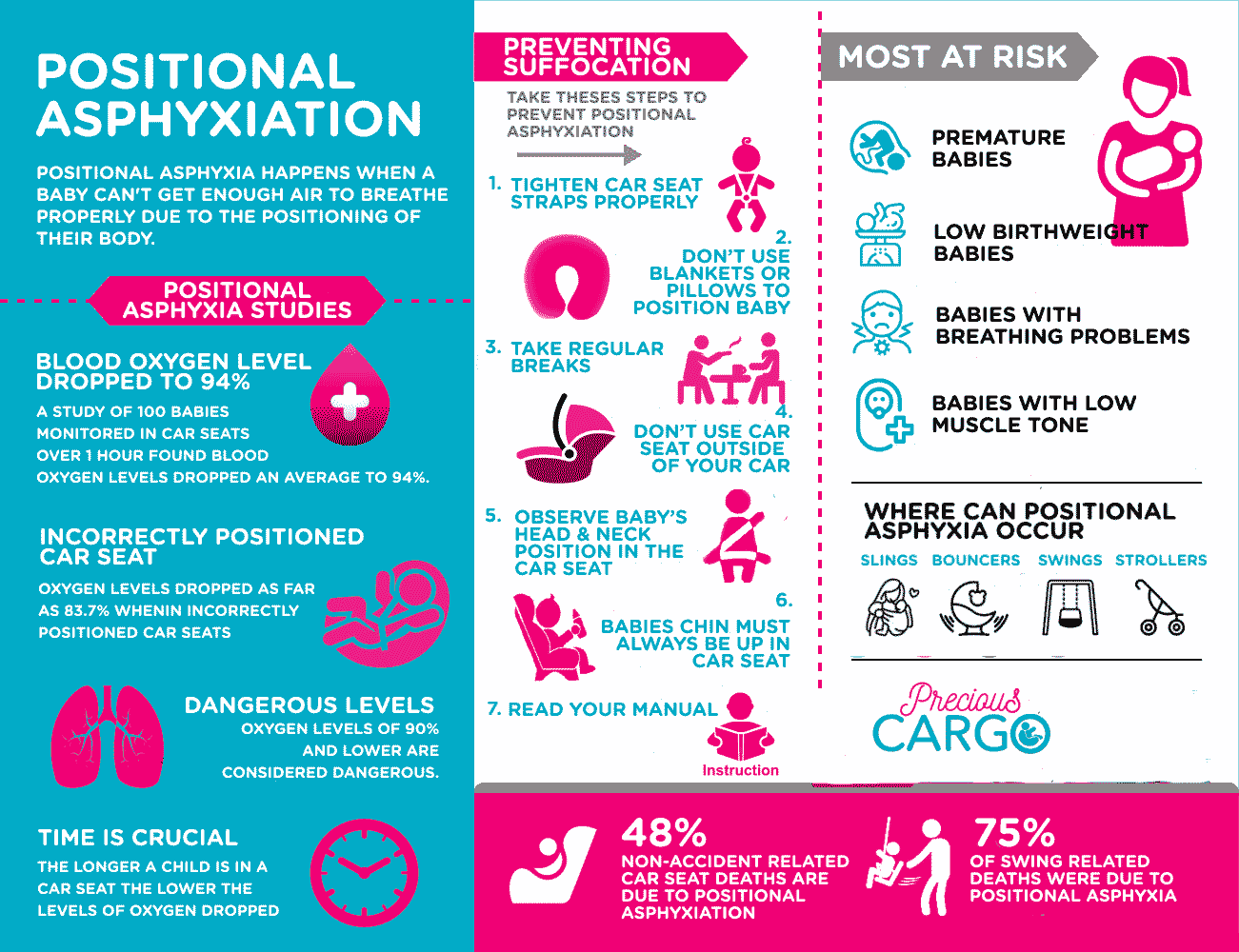
BABIES, CAR SEATS AND THE SLEEP CONUNDRUM
Getting babies to fall asleep is often a challenging task. So the temptation to leave a baby to sleep in the car seat after your journey is understandable. What many parents are not aware of is that this increases the risk of positional asphyxiation.
There have been several stories in the news recently of babies, one as old as 18 months, who died while napping in their car seats.
Car seats are designed to protect children from crashes in a car, but are not designed for babies to sleep or lie in for prolonged periods. Babies are safest sleeping in a flat position, preferably on their back on a firm, flat surface.
Car seats are designed to recline to approximately 45 degrees for infants and 37 degrees for older babies with head control, in order to minimise the head from straining on the weak neck area in the event of a collision. If a car seat were to recline to a flat position, it would not provide the safety required in a crash (except for the Maxi Cosi Jade carry cot which lays flat across the backseat and scores very well for safety)
The largest issue recognised for the ‘over use’ of car seats is when they are not used purely as a safety product in the car, but when used combined with a stroller to form what is often called a ‘travel system’.” Whilst a travel system provides the convenience to transfer a baby from car to stroller without waking the baby, in light of this study and other studies surrounding the safest position for a baby to be positioned for prolonged periods of time we felt that it would be prudent to introduce a new guidance that the system should not be used for periods of longer than 30 minutes for babies under four weeks of age and two hours for those older than four weeks.“ .
The Baby Products Association
WHAT IS POSITIONAL ASPHYXIATION?
Positional asphyxiation happens when a child cannot get enough air to breathe properly due to the positioning of their body.
Breathing is a mechanical process involving the chest wall, rib cage, diaphragm and abdominal muscles. If the movement of any of these parts are significantly impaired for any length of time, the child may not be able to get enough oxygen which can result in excess carbon dioxide, brain damage and even death.
Babies may die from positional asphyxiation by simply getting themselves into a position where their breathing is restricted or where their chest is unable to fully expand, and they cannot get out of that position. They are particularly at high risk before they have head control.
ARE S.I.D.S AND POSITIONAL ASPHYXIATION THE SAME THING?

No. SIDS (Sudden Infant Death Syndrome) occurs when an infant dies while sleeping in an otherwise safe sleeping environment and is not associated with suffocation.

Positional Asphyxiation occurs when a baby suffocates from being in a position that restricts the breathing movements of the chest or that resulted in its nose or mouth being obstructed.
HOW COMMON IS POSITIONAL ASPHYXIATION?
The cases of infant deaths caused by Positional Asphyxiation pales in comparison to the number of infant deaths caused by road collisions every year. It is important to keep this in mind when considering the dangers of Positional Asphyxiation. The chances of death in a car accident are much higher than the risk of Positional Asphyxiation.
The studies cited in this article stress the importance of using car seats in spite of the dangers of Positional Asphyxiation and acknowledge their life saving benefits.

That being said, a study by the Journal of Pediatrics, reviewing all non-accident related deaths reported to the Consumer Product Safety Commission between 2004 and 2008, found that 48 percent of car seat deaths and 75 percent of swing deaths were due to positional asphyxiation.
Of the 47 deaths in baby products analysed, 31 occurred in car seats.What causes Positional Asphyxiation in Car Seats?
While in the womb, your baby is suspended in amniotic fluid. In this state of near weightlessness your baby’s fragile body is able to develop away from the strains of gravity.
Once out of the womb, your infant’s weak little muscles are not even strong enough to support their heavy heads against the force of gravity. This makes even very simple tasks like sleeping in a non-horizontal position potentially dangerous.

When a baby is fastened into a car seat incorrectly he/she may slump over. This can hinder your baby’s breathing. When a newborn slumps forward, the full weight of their body is shifted forward. This slumped posture can mean the rib cage is not able to expand properly,
the diaphragm cannot work and breathing becomes difficult. The trachea can also close if the head is hanging forward which can cause asphyxiation.
A number of studies have been done that look at the oxygen levels in a newborn's blood whilst in their car seat. Pediatrics Magazine published a study of 100 babies who were monitored in their car seats over one hour.
On average, blood oxygen levels were found to have dropped to 94%. 12% of the premature babies' tests experienced apnea or bradycardia.
In another study, oxygen levels dropped as far as 83.7% when incorrectly positioned in car seats. Oxygen levels of 90% and lower are considered dangerous. It was also found that the longer a child is in a car seat the lower the levels of oxygen dropped.

Who is at greatest risk of positional Asphyxiation?
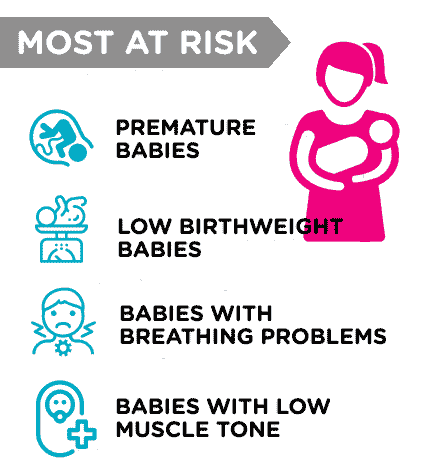
- Premature babies.
- Low birthweight infants.
- Babies with low muscle tone.
- Babies with breathing problems.
A study of sudden unexpected infant deaths associated with car seats showed that the majority of the deaths occurred while car seats were being inappropriately used, outside of the car. There appears to be no increased risk of unexpected deaths of healthy infants transported APPROPRIATELY in car seats.
What are the signs and symptoms of positional asphyxiation?
The effects of Positional Asphyxiation in an infant can be incredibly hard to notice as a baby can appear normal but have an oxygen deficit building in their body. They can suddenly lose consciousness without overt symptoms.
Where else could my child be at risk of positional Asphyxiation?
Positional Asphyxiation can happen anywhere that your baby is restrained in a way that negatively affects their respiratory system. It can happen in a bouncy seat, a baby carrier/sling, stroller and even in a swing.

How you can reduce infant positional asphyxiation?
It is vital that babies be securely strapped into car seats to protect them in the event of a crash. Below is a list that will help you to keep your baby as safe as possible, to reduce the risks of positional asphyxiation:
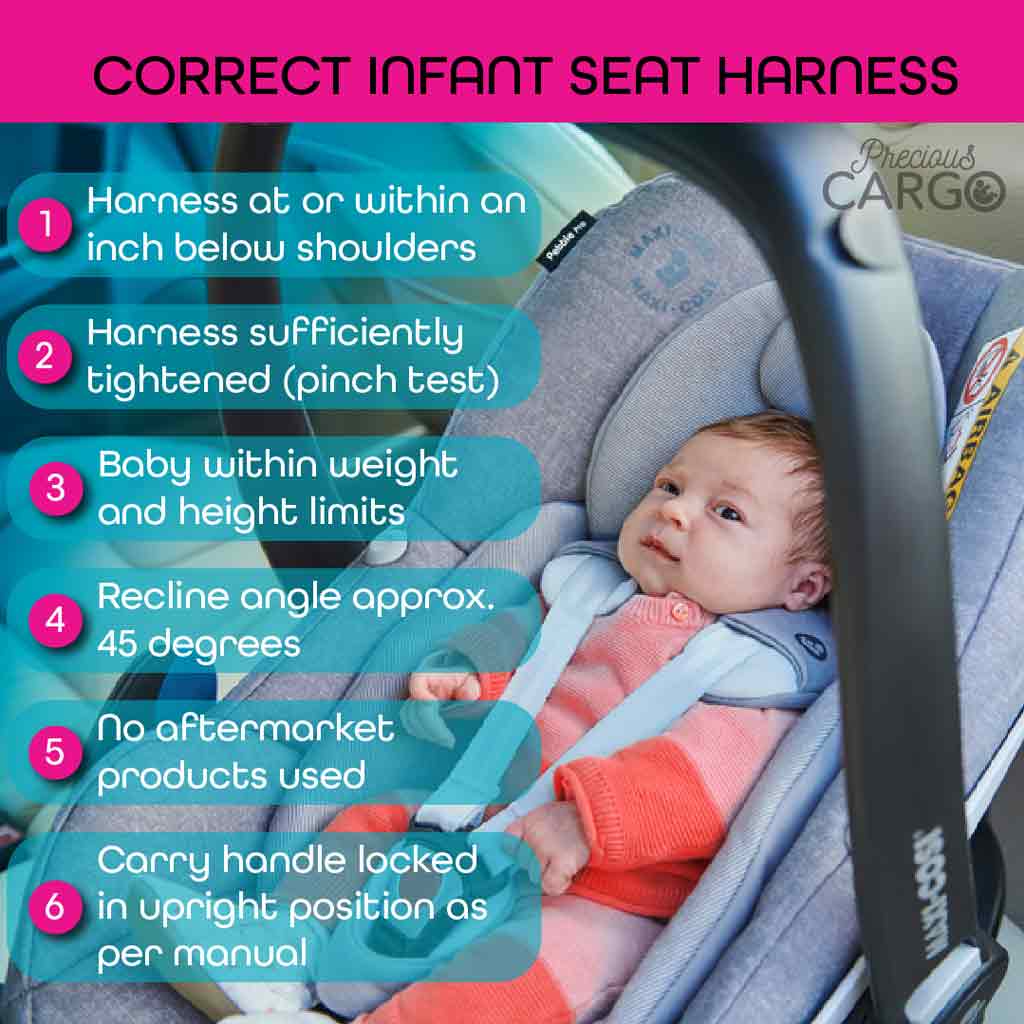
1. Ensure the harness is at the correct height
For rear facing car seats, the harness should come from at or just below the shoulder level. For forward facing car seats, the harness should come from at or just above the shoulder level.
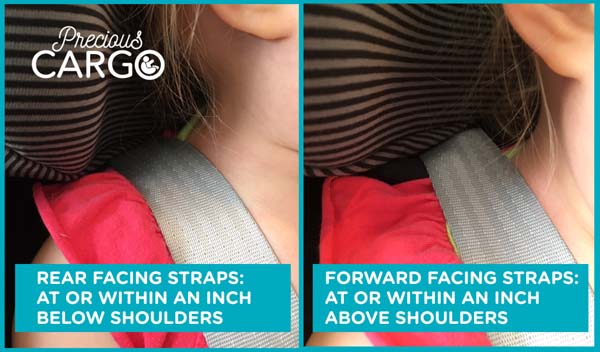
2. Tighten car seat Straps and Harnesses PROPERLY.
Loose straps allow your baby's body to slump into positions that can compromise their airway. When straps are properly fastened they support your baby in a more reclined position that keeps their airway open. Loose straps are also dangerous because they can trap the head or neck and suffocate your infant. A study by the Journal of Pediatrics found that 52% of all non-accident related deaths reported to consumer product safety commission between 2004 and 2008 were attributed to strangulation from loose straps.

3. Avoid unsafe aftermarket infant supports and pillows.
Do not add unapproved pillows or inserts in an attempt to keep your baby's head upright as these can pose asphyxiation risks. Babies can twist their head into the soft padding used to prop them up, and suffocate. If your baby requires additional support, car seat technicians approve the use of tightly rolled receiving blankets tucked under the sides of the baby after buckling up, to provide lateral support. (Please note that chest clips should only be used on American car seats, and are not legal or safe to use on our European car seats)

4. Install the car seat without the base.
Sometimes the base can increase the incline of the car seat and worsen head slump. Try installing the car seat without the base to see if this gives a better recline angle for your baby. Follow the manual on how to install the car seat with the seat belt.

5. Take regular breaks.
Studies have found that the longer a child was in a car seat the lower the levels of oxygen in their blood dropped. Many specialists today recommend that infants under 4 weeks old spend no more than 30 minutes in a car seat at a t time. Babies older than 4 weeks should not be in car seats for longer than 2 hours.
Try to take regular breaks when travelling long distances. Take your baby out the car seats to stretch and improve blood circulation.
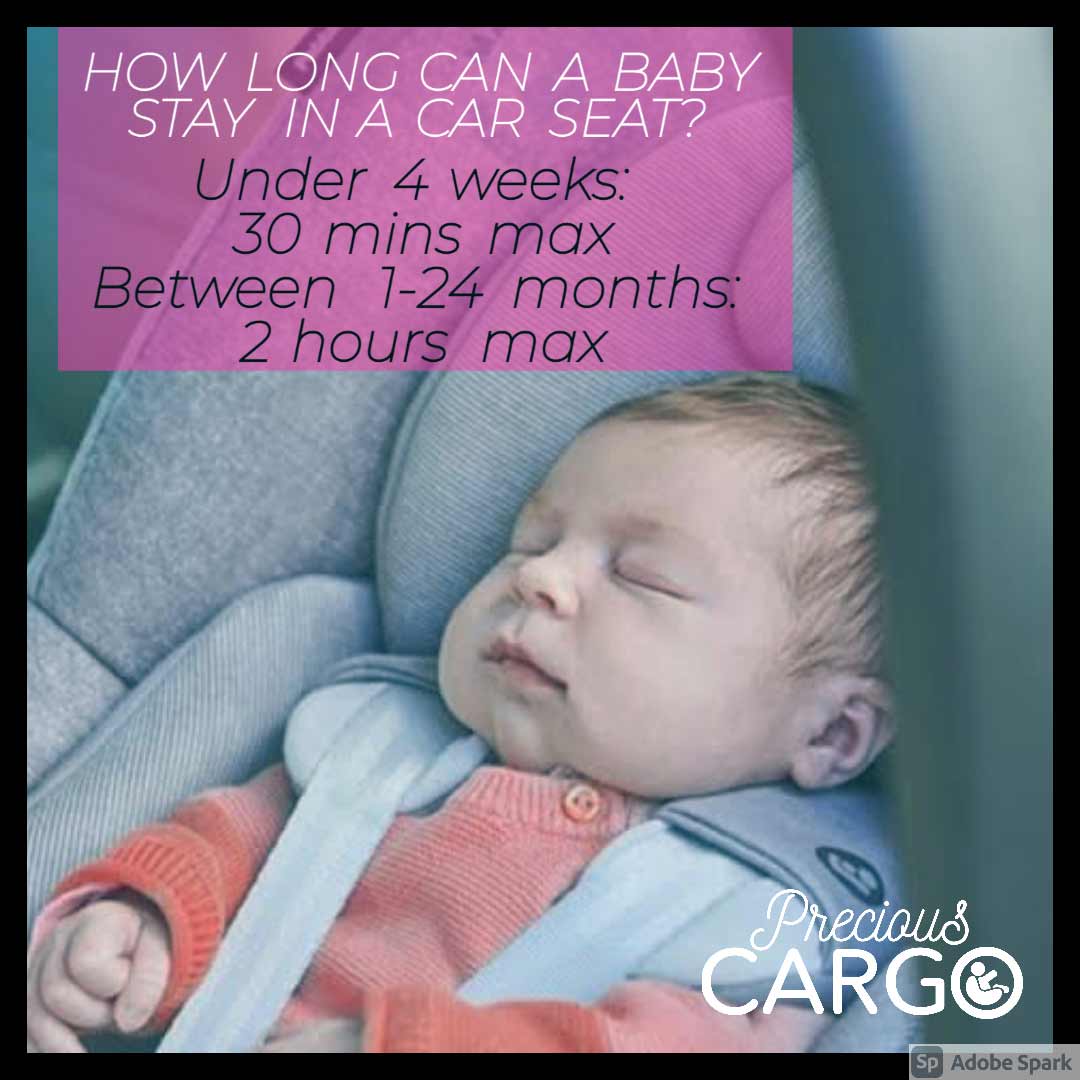
6. Car seats should only be used in a car.
The angle of rear facing infant seats is designed to keep a newborn's airway open. As tempting as it might be, removing your sleeping infant from the car in their car seat and allowing them to sleep elsewhere is dangerous. This includes putting the car seat in the pram for prolonged periods. It is especially unsafe to place them on the floor, on the bed, on a counter or on the couch, not only due to positional asphyxiation risk but also due to risk of falling.
When a car seat is not sitting at the correct recline angle, it can quickly result in your baby's respiratory system being compromised.
7. Check your baby regularly .
If possible, have someone sit at the back to check that your baby's breathing is regular and that their head and neck are in a good position. If this is not possible, install a crash tested mirror so that you can keep an eye no your baby when it is safe to do so.
8. Read your car seat manual.
The Journal of Pediatrics who studied a sample of infant deaths in sitting and carrying devices concluded that “ Most, if not all, of these death might have been prevented had the device been used properly and/ there had been adequate supervision.
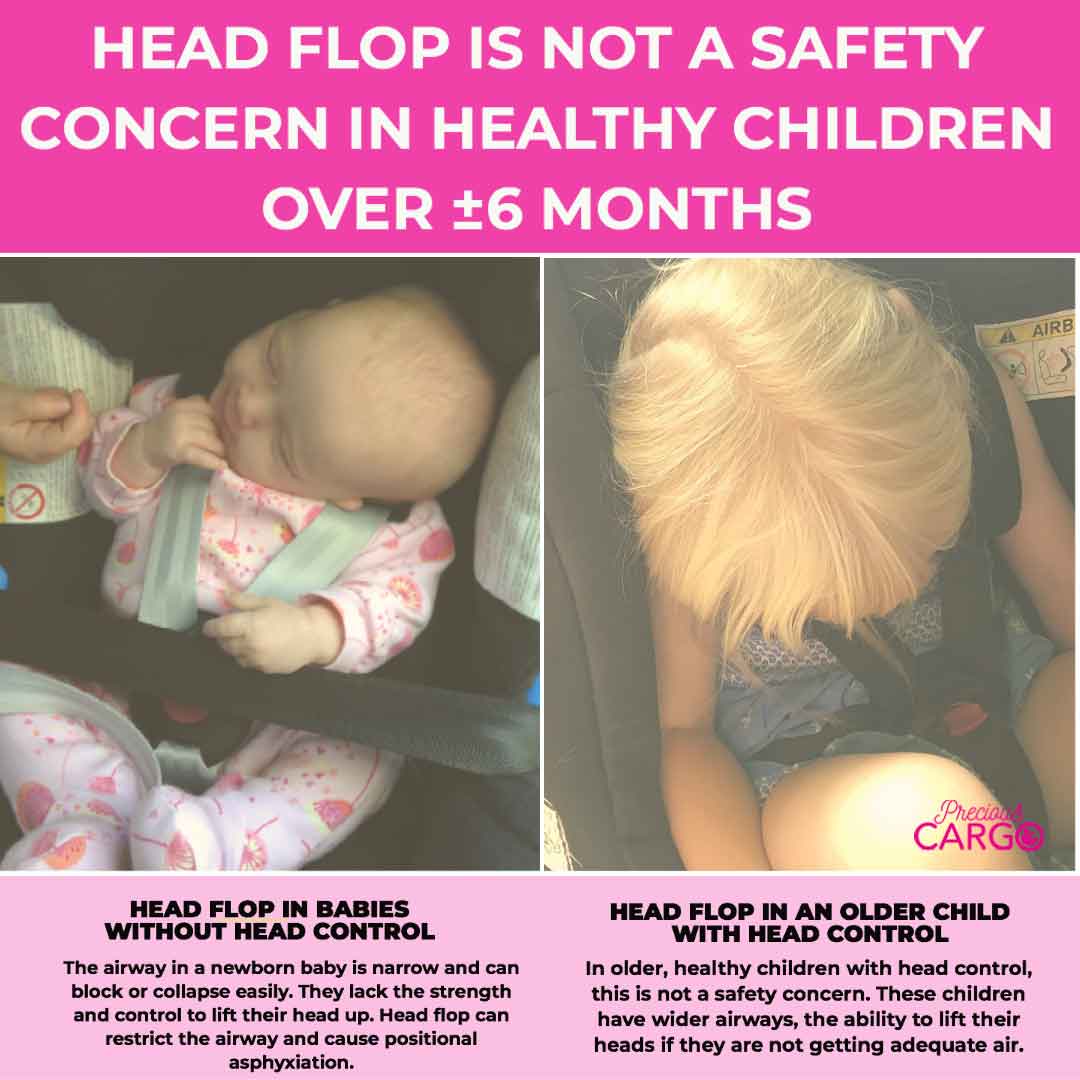
REFERENCES
http://babyyourbaby.org/infants/positional-asphyxia.php
http://erfmission.com/90-min-rule/
https://en.wikipedia.org/wiki/Positional_asphyxia
https://cultureofsafety.thesilverlining.com/childcare/car-seats-and-positional-asphyxiation
https://babyseat.fundacionmapfre.org/children/news/positional-asphyxia.jsp
https://www.oneaid.co.za/how-safe-is-your-car-seat/
https://www.nhs.uk/news/pregnancy-and-child/warning-over-babies-sleeping-in-car-seats/
https://www.sids-network.org/experts/suff.htm
https://www.ncbi.nlm.nih.gov/pubmed/25917769
pods.dasnr.okstate.edu/docushare/dsweb/Get/Document-10609/T-2383web.pdf
http://www.b-p-a.org/bpa-org/home.asp
https://www.ncbi.nlm.nih.gov/pubmed/24435952

Precious Cargo
Dear Jephte. Yes, you are welcome to use our info if you reference us and link to our article.
Jephte
very informative article. I would like to use some of the info on my website. Would that be ok with you?